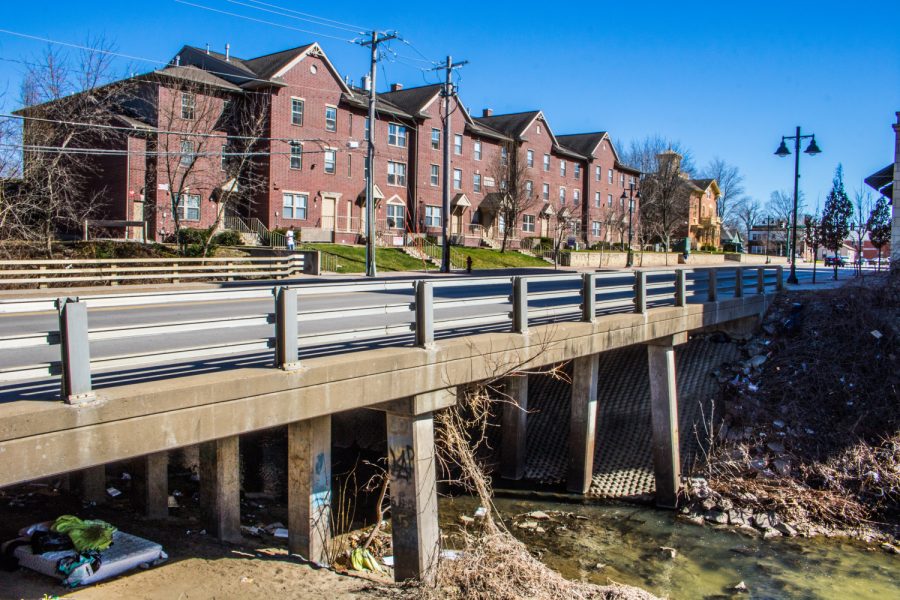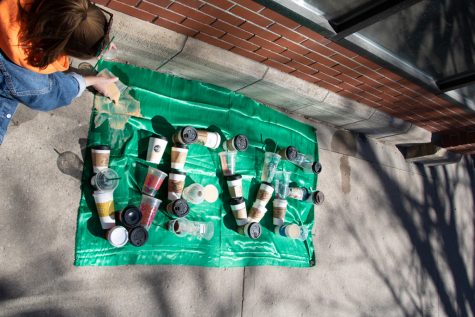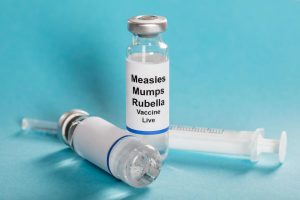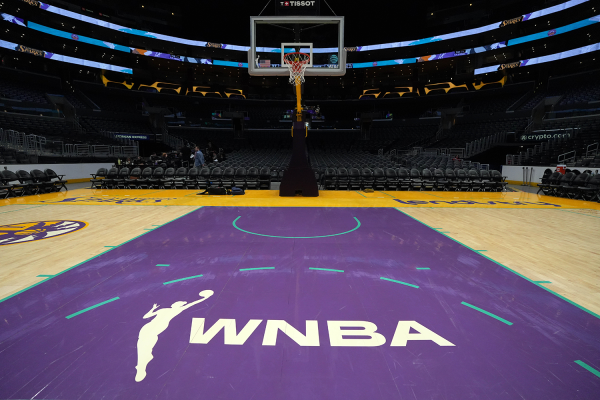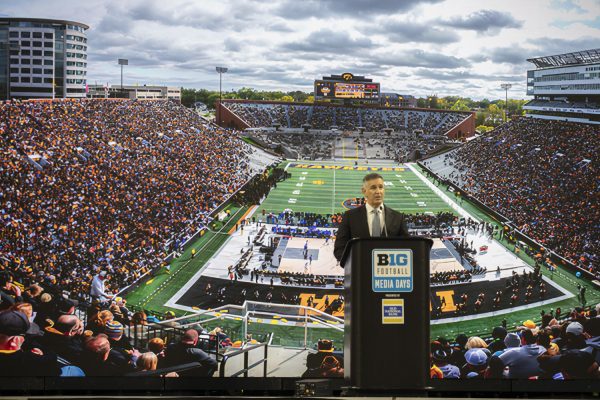Iowa ranks third in structurally deficient bridges
Iowa was named among the top three states for highest percentages of structurally deficient bridges. Transportation experts are advocating for more government funding to fix the issue.
The bridge on Gilbert Street over Ralston Creek in Iowa City is seen on Monday, April 8, 2019.
April 15, 2019
A recent survey of bridges from the Federal Highway Administration has named Iowa as having the third-highest percentage of structurally deficient bridges in the nation that need to be repaired.
According to the survey, 19.4 percent of Iowa’s bridges are structurally deficient. Rhode Island sits at 23.1 percent and West Virginia at 19.9 percent.
The 2nd Congressional District, which includes Johnson County, ranks higher than the state’s average, with 22.3 percent of bridges in need of repair or replacement.
The county is home to six of the most-traveled structurally deficient roads in the 2nd District, according to the report.
The Iowa Department of Transportation is responsible for the majority of bridge repairs in the state and is also responsible for funding bridge repair.
James Nelson, the director of the Office of Bridges and Structures at the Iowa DOT, said that although the structurally bridges are classified as being in poor condition, they are not unsafe for travel.
Bridges are inspected by the Iowa DOT at least every 24 months, he said. DOT manages more than 4,000 bridges in the state of Iowa, according to its website.
“Bridges that are determined to be unsafe are closed immediately,” Nelson said in an email to The Daily Iowan. “SD is a term originally used to identify bridges that qualified for federal funding to repair or replace the bridge. It establishes a threshold where a bridge has conditions that could need eventual repair.”
RELATED: The future of Dodge Street includes a massive construction project slated for 2023
There’s currently one bridge construction project underway in Johnson County, on Forevergreen Road, according to the DOT website. Officials estimate that the project will conclude this summer.
In order to be classified as structurally deficient, a bridge must be ranked poor or worse by the National Bridge Inventory, which is performed by the Federal Highway Administration.
According to the agency, a bridge that receives a “poor” classification indicates that repairs or replacement will be needed in the near future.
Alison Black, a chief economist at the American Road and Transportation Builders Association who conducted an analysis of the data, determined that it would take nearly 80 years to replace or repair America’s structurally deficient bridges.
“America’s bridge network is outdated, underfunded, and in urgent need of modernization,” she said in an email to the DI. “State and local government just haven’t been given the necessary resources to get the job done.”
Black also noted that the rate of bridge repair is at its slowest pace since the association began conducting its annual report five years ago.
RELATED: Ped Mall construction set to begin Phase 2 in May
“We expect that unless we see a significant increase in federal investment, the pace of bridge repairs will continue to slow down,” Black said in her email. “Unless Congress acts to fix the depleted federal Highway Trust Fund, which funds on average more than half of states’ transportation outlays, our national bridge crisis will continue.”
The estimated cost for all 2nd District bridge repairs is more than $400 million, which would cover 3,695 bridges that are in need of repairs, according to the association.
Association President Dave Bauer has called for the federal government to assign more resources to repairing America’s infrastructure.
“This report makes clear that it’s about time Congress and the Trump administration stop talking and start solving this national problem,” Bauer said in an email to the DI.



